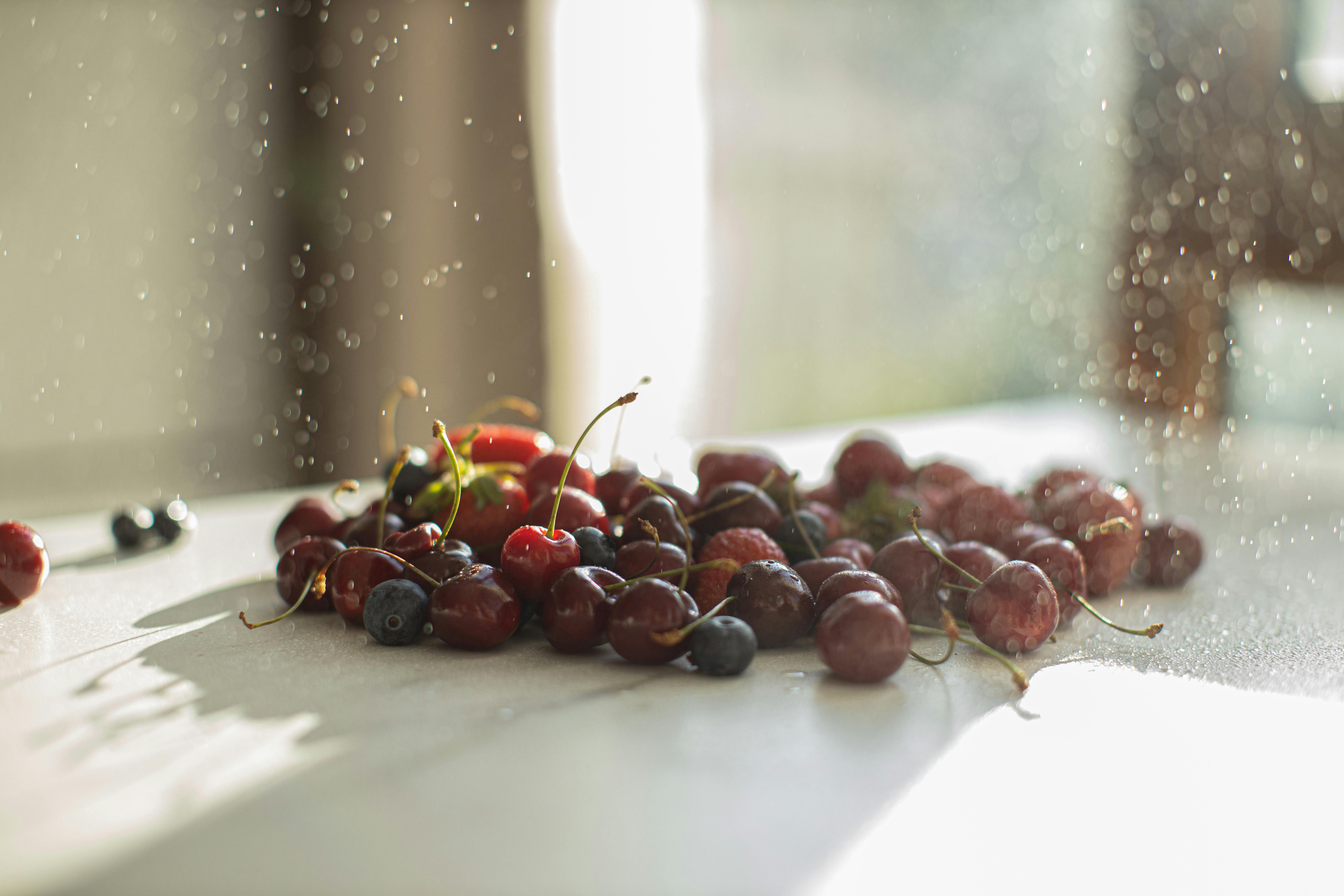Strawberries are a delicious and versatile fruit that can be used to make jams, eaten as a snack, or used in salads and desserts. However, in order to keep your strawberry plants healthy and producing abundant harvests, it is important to understand how much water they need. This article will provide an overview of how much water strawberries need, and some tips on the best way to provide it.Strawberries require at least 1 to 2 inches of water per week to stay healthy and produce fruit. To best meet the water needs of your strawberry plants, it is recommended that you provide a deep and thorough watering once a week.
Amount of Water
Strawberries need an adequate amount of water in order to grow and produce healthy fruit. The amount of water your strawberry plants will need depends on a variety of factors, such as the soil type, temperature, and humidity. Generally, you should aim to provide 1-2 inches of water per week for your strawberry plants. This can be done through irrigation or rainfall. If you are using irrigation, it is important to make sure that the water is evenly distributed over the entire area around the plant.
Frequency of Watering
Typically, strawberries need to be watered two or three times a week in order to keep them healthy and ensure they produce good fruit. However, if there has been a lot of rain recently then you may not need to water as often. Conversely, if there has been little rain then you may need to increase the frequency of watering. It is also important to check the soil moisture levels before watering as overwatering can lead to diseases and root rot.
Time of Day
The best time of day to water strawberry plants is in the morning or early afternoon when there is still plenty of sunlight available. Avoid watering late in the day as this can cause disease problems due to extended dampness on the foliage overnight. Additionally, it’s best to avoid watering during midday when temperatures are hottest since this can cause dehydration and stress on your strawberry plants.
Type of Water
Strawberries prefer soft water like rainwater or filtered tap water over hard tap water with high mineral content that could damage their delicate roots. Additionally, avoid using chlorinated tap water since chlorine can damage foliage and disrupt beneficial microorganisms in the soil.
Types of Soil for Growing Strawberries
Growing strawberries is a rewarding experience, but it can be even more successful if you choose the right type of soil for your plants. The type of soil you use will affect the growth and yield of your strawberry plants, so it’s important to choose the best one. There are several types of soil that can be used for growing strawberries, including sandy loam, clay loam, and loamy sand. Each type has its own set of benefits and drawbacks, so it’s important to understand the characteristics of each before deciding which one is best for your garden.
Sandy loam is a light, airy soil that contains a mix of sand, silt, and organic matter. It has excellent drainage and aeration properties which make it ideal for growing strawberries. The sand particles provide adequate drainage while the silt particles help retain moisture. Sandy loam is also ideal for nutrient retention as organic matter helps to hold onto essential nutrients that are needed by plants.
Clay loam is a heavier soil that contains more clay than sandy loam. This type of soil provides good water retention and nutrient retention due to its higher content of clay particles which hold onto vital minerals and nutrients needed by strawberry plants. Clay loam also has better compaction qualities than sandy loam making it less prone to erosion or compaction when walked on or tilled repeatedly.
Loamy sand is composed mostly of sand with some silt and organic matter mixed in. This type of soil has excellent drainage properties due to its high content of sand particles while also providing adequate nutrition due to its organic matter content. Loamy sand does not have the same water-retention qualities as clay or sandy loams but still provides adequate moisture for strawberry plants in most conditions.
When choosing between these three types of soils for growing strawberries, it’s important to consider the particular needs of your plants as well as your own preferences in terms of texture and ease-of-use when gardening. Each type has its own set of advantages and drawbacks so understanding their characteristics will help you decide which one works best for your garden.
The Best Time to Water Strawberries
Watering strawberries is an important part of ensuring healthy and productive plants. In order to get the most out of watering, it is important to know when the best time to water strawberries is. Generally speaking, the best time to water strawberries is in the morning before the sun has had a chance to dry up any moisture. This allows the water to be absorbed into the soil and reach the roots of the plant before evaporation can occur. It also helps reduce disease pressure from fungus and other pests that may be present in wetter conditions.
When watering strawberries, it is important to make sure they are getting enough water without over-watering them. Too much moisture can lead to root rot and other diseases that can damage or even kill plants. The best way to tell if your strawberry plants need more water is by checking the soil moisture levels with your finger or a trowel. If it feels dry, then it’s time to water. Water until you see some runoff coming out of the pot or container, then stop.
It’s also important that you avoid wetting leaves as much as possible when watering strawberries in order to reduce disease pressure from fungus and other pests that may be present in wetter conditions. When you do water, try using a soaker hose or drip irrigation system so that the water gets directly into the soil where it needs to go without getting on leaves or fruit. This will help reduce potential for disease while still providing your plants with enough moisture for optimal growth.
The Benefits of Overwatering Strawberries
Overwatering strawberries has its advantages and can be beneficial to the health of the plant. Strawberries are shallow-rooted plants that require frequent watering to keep their roots moist. When strawberry plants are overwatered, it helps to reduce stress on the plant by providing a more consistent source of moisture and nutrients. The extra water also helps to flushes out any built-up salts and other minerals that can accumulate in the soil over time. Additionally, overwatering helps to flush away any pests or diseases that may be present in the soil, protecting the health of the plant.
Overwatering also increases oxygen levels in the soil, which is beneficial to both root growth and microbial activity. When soil is kept consistently moist, oxygen levels increase due to increased microbial activity. This helps with root growth as well as aiding in nutrient uptake from the soil, helping to ensure that your strawberries are getting all of the nutrients they need for optimum growth and health.
Finally, overwatering also helps keep strawberry beds weed free. Weeds can easily take hold in dry soils, but they are much less likely to take hold when there is an abundance of moisture available for them to thrive on. Keeping your strawberry beds weed-free will help ensure that your plants get all of the light and nutrients they need for healthy growth and production.

Effects of Underwatering Strawberries
Underwatering strawberries can cause the plants to suffer from a variety of issues, such as wilting, stunted growth, and eventually death. Wilting is one of the most common symptoms of underwatering. When plants are not getting enough water, their leaves will start to droop and curl inwards in an attempt to conserve moisture. The leaves may also start to turn yellow or brown. In extreme cases, the affected parts may become brittle or dry up completely. This can cause serious damage to the plant and its fruit production.
Stunted growth is another common symptom of underwatering. When plants are not getting enough water, they will be unable to grow as quickly and vigorously as they would under normal conditions. This can lead to smaller fruits and less overall yield. In addition, the plant may be more vulnerable to pests and diseases due to its weakened state.
In some cases, underwatering can lead to death if left untreated for too long. Without adequate water, the plant’s roots will eventually become dehydrated and die off, leading to the demise of the entire plant. Therefore, it is important for gardeners to ensure that their strawberry plants are getting enough water in order for them to remain healthy and productive.
Watering Tips
Water is essential for any plant to thrive, and strawberry plants are no exception. Watering your strawberry plants correctly is one of the most important things you can do to ensure a successful crop. Here are some tips for watering your strawberry plants:
Frequency
Strawberry plants need to be watered regularly, especially during the growing season. Depending on your local climate and soil conditions, you may need to water as often as once a week or more. Monitor your plants closely and adjust the frequency as needed.
Amount
When watering your strawberry plants, it’s important to give them enough water without over-watering. The general rule of thumb is about 1 inch of water per week for established strawberry plants. You can measure this by using a rain gauge or other measuring device.
Timing
It’s best to water in the morning so that the foliage has time to dry off before nightfall; this helps reduce the risk of disease and pests. Additionally, it’s best to avoid wetting the foliage directly; instead, use drip irrigation or soaker hoses at ground level.
Soil Type
It’s important to know what type of soil you have in order to determine how much and how often to water your strawberry plants. Sandy soils tend to dry out quickly, so they may require more frequent watering than clay soils that retain moisture better.
By following these tips for watering your strawberry plants, you’ll be well on your way towards a healthy and abundant crop!
Signs of Underwatering in Strawberry Plants
Underwatering is a common problem with strawberry plants that can lead to serious consequences if not addressed quickly. The signs of underwatering in strawberry plants are easy to spot and can help gardeners diagnose the problem and take action before it’s too late. Typical signs of underwatering include wilting, yellowing, or stunted growth of the leaves, as well as brown or dry patches on the leaves. The stems may also become brittle or discolored, and the roots may become weak and unable to hold the plant firmly in place. As water needs increase during hot summer months, gardeners should pay close attention to their strawberries for any signs of underwatering.
If left untreated, the plant’s overall health will suffer and eventually die. In some cases, leaves can begin to drop off from lack of moisture. Fruits may also fail to develop properly or may have a dry texture when harvested. To avoid any problems related to underwatering, gardeners should check their strawberry plants frequently and provide adequate water when needed.
Most experts recommend watering strawberry plants deeply at least once a week during the growing season, more often if needed. Depending on the climate and soil conditions, more frequent watering may be necessary during periods of extended heat or drought-like conditions. Applying a layer of mulch around the base of the plant can help retain moisture and reduce evaporation from the soil surface. Established strawberry plants can also benefit from occasional fertilization once or twice per season to replenish nutrients in the soil that are lost through watering and other environmental factors.
By following these simple steps and paying close attention to any signs of underwatering, gardeners can ensure their strawberries stay healthy throughout the growing season and harvest sweet fruits for many years to come!

Conclusion
Watering strawberries is essential for their health and growth. You should water your strawberries frequently, but not too much. They need an inch of water per week, which can be provided through deep watering or light, frequent watering. It is important to check the soil moisture regularly to ensure that your strawberries are getting enough water. Over-watering can lead to root rot and other diseases, so it is important to find the right balance for your specific plants.
When using a drip irrigation system, you should adjust the amount of water based on weather conditions and soil type. A mulch layer around the plants helps to conserve moisture and keep weeds down.
In conclusion, when it comes to watering strawberries it is important to find the right balance between frequency and amount of water given. The best way to determine the proper amount of water is by monitoring your plants’ growth and checking the soil moisture regularly.
With proper watering techniques, you can ensure that your strawberry plants stay healthy and produce a bountiful harvest!



